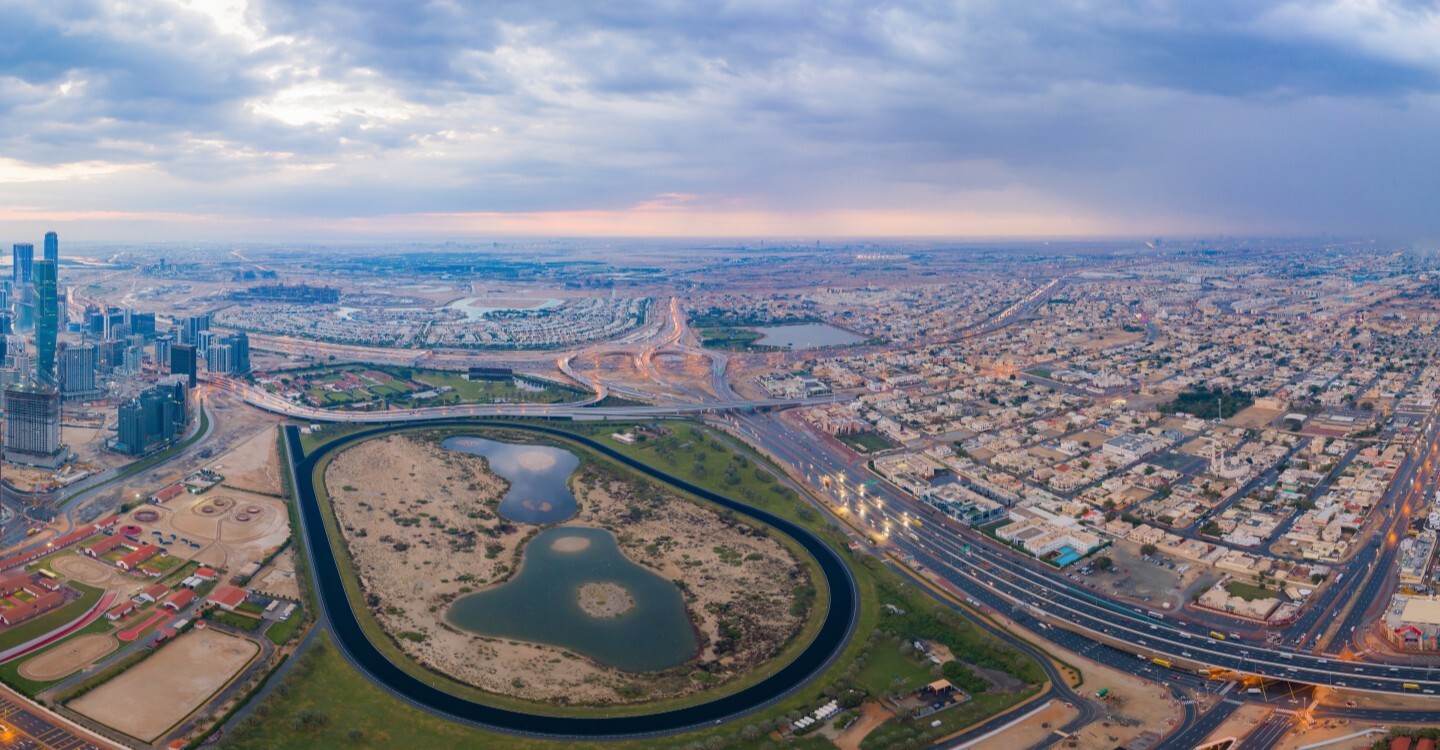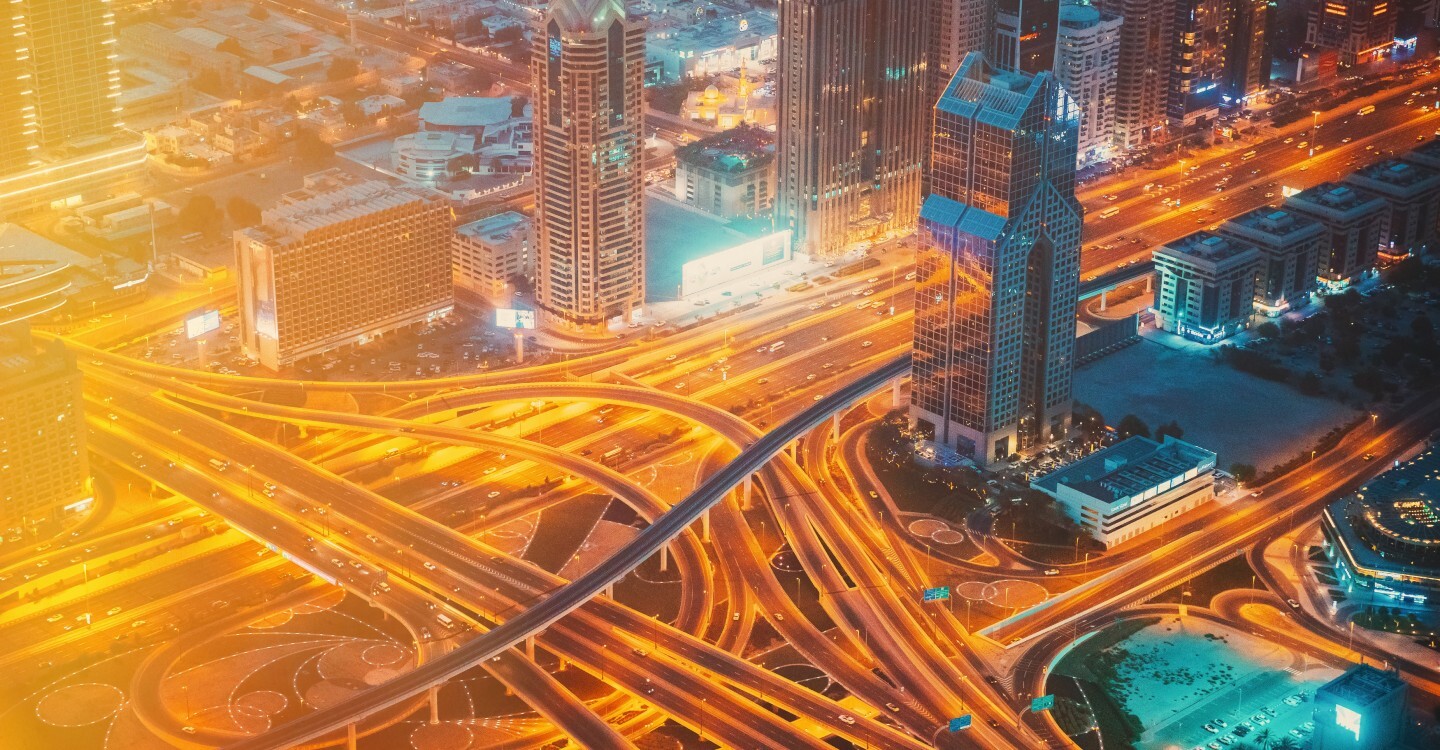Are we breaking up with cars?
If you’ve ever spent 45 minutes in Sheikh Zayed Road traffic just to grab groceries, you’ll love this:
Dubai is actively embracing the 15-minute city model, an urban planning concept that makes life tremendously convenient.
The idea? Everything you need – home, work, coffee shops, supermarkets, schools, parks, even your favourite shisha spot – should be within a 15-minute walk or bike ride.
The result? Less time wasted commuting, more time for yourself. Overall, a healthier, more vibrant lifestyle.
And Dubai isn’t just flirting with this concept, it’s making it law. As reported by Gulf News, the Dubai Development Authority (DDA) has implemented urban planning guidelines requiring developers to allocate a portion of Gross Floor Area (GFA) to commercial spaces.
That means no more isolated residential clusters; instead, every new development must include built-in retail, dining, and workspaces to create self-sustaining, walkable communities where daily needs are just steps away.
One of the most exciting examples of this shift?
If you’ve ever spent 45 minutes in Sheikh Zayed Road traffic just to grab groceries, you’ll love this:
Dubai is actively embracing the 15-minute city model, an urban planning concept that makes life tremendously convenient.
The idea? Everything you need – home, work, coffee shops, supermarkets, schools, parks, even your favourite shisha spot – should be within a 15-minute walk or bike ride.
The result? Less time wasted commuting, more time for yourself. Overall, a healthier, more vibrant lifestyle.
And Dubai isn’t just flirting with this concept, it’s making it law. As reported by Gulf News, the Dubai Development Authority (DDA) has implemented urban planning guidelines requiring developers to allocate a portion of Gross Floor Area (GFA) to commercial spaces.
That means no more isolated residential clusters; instead, every new development must include built-in retail, dining, and workspaces to create self-sustaining, walkable communities where daily needs are just steps away.
One of the most exciting examples of this shift?

Bu Kadra: Dubai’s Bold Step Toward a Car-Free Future
Dubai isn’t just talking about car-free living, it’s building it.With traffic congestion on the rise, the government has already initiated the GPA (Gross Plot Area) strategy to ease mobility and enhance urban living.
Bu Kadra, an emerging district in the city, is set to become one of Dubai’s first fully integrated, walkable micro-communities.
Imagine wide, shaded sidewalks, dedicated cycling lanes, easy access to public transport, and a layout that prioritizes pedestrians over cars.
This isn’t just an aesthetic upgrade; it’s part of a massive urban rethink. As per the DDA’s latest urban development strategy, developers must integrate residential, retail, and recreational spaces into a seamless, walkable ecosystem.
Husni Al Bayari, Chairman of Evolutions, commented, "With traffic congestion increasing in Dubai, the need for smarter urban planning has never been greater. The government’s GPA initiative isn’t just about reducing traffic, it’s about creating a more seamless, stress-free way of life for everyone in the city. Bu Kadra is a great example of how this vision is taking shape, prioritizing walkability and community-centric living."
This marks a major step in Dubai’s urban transformation, where convenience, sustainability, and quality of life take centre stage.
And it’s not just Bu Kadra. Other districts like Meydan Avenue, Jumeirah Village Circle, and Dubai South are also embracing pedestrian-first principles, reshaping Dubai’s urban landscape from car-centric to human-centric.
But why is Dubai, a city known for its love of supercars, moving away from cars?
Bu Kadra, an emerging district in the city, is set to become one of Dubai’s first fully integrated, walkable micro-communities.
Imagine wide, shaded sidewalks, dedicated cycling lanes, easy access to public transport, and a layout that prioritizes pedestrians over cars.
This isn’t just an aesthetic upgrade; it’s part of a massive urban rethink. As per the DDA’s latest urban development strategy, developers must integrate residential, retail, and recreational spaces into a seamless, walkable ecosystem.
Husni Al Bayari, Chairman of Evolutions, commented, "With traffic congestion increasing in Dubai, the need for smarter urban planning has never been greater. The government’s GPA initiative isn’t just about reducing traffic, it’s about creating a more seamless, stress-free way of life for everyone in the city. Bu Kadra is a great example of how this vision is taking shape, prioritizing walkability and community-centric living."
This marks a major step in Dubai’s urban transformation, where convenience, sustainability, and quality of life take centre stage.
And it’s not just Bu Kadra. Other districts like Meydan Avenue, Jumeirah Village Circle, and Dubai South are also embracing pedestrian-first principles, reshaping Dubai’s urban landscape from car-centric to human-centric.
But why is Dubai, a city known for its love of supercars, moving away from cars?
Why is Dubai Reducing Car Dependency?
Let’s be real: Dubai loves its luxury cars. But even in a city that prides itself on horsepower, car dependency is becoming a problem.
That’s why the government is taking bold steps toward a more sustainable, walkable future.
Here’s why:
Better Quality of Life: Less time spent in traffic means more time for yourself. A UAE-based study cited by Khaleej Times (2024) found that walkable communities significantly improve mental and physical well-being.
Stronger Local Economies: When people walk and bike, they’re more likely to shop at local stores rather than drive to big malls. A 2024 Financial Times report found that pedestrian-friendly districts experience a boost in local business revenue.
A Greener Future: Reducing car dependency aligns with Dubai’s Net Zero 2050 Strategy, cutting emissions and improving air quality as per Dubai Municipality Report, 2025.
Less Traffic, More Freedom: With Dubai’s investment in public transport, cycling lanes, and pedestrian infrastructure, moving around without a car will soon be just as easy, if not easier, than driving.
That’s why the government is taking bold steps toward a more sustainable, walkable future.
Here’s why:
Better Quality of Life: Less time spent in traffic means more time for yourself. A UAE-based study cited by Khaleej Times (2024) found that walkable communities significantly improve mental and physical well-being.
Stronger Local Economies: When people walk and bike, they’re more likely to shop at local stores rather than drive to big malls. A 2024 Financial Times report found that pedestrian-friendly districts experience a boost in local business revenue.
A Greener Future: Reducing car dependency aligns with Dubai’s Net Zero 2050 Strategy, cutting emissions and improving air quality as per Dubai Municipality Report, 2025.
Less Traffic, More Freedom: With Dubai’s investment in public transport, cycling lanes, and pedestrian infrastructure, moving around without a car will soon be just as easy, if not easier, than driving.

But Wait… Can Dubai Really Go Car-Free?
Let’s address the elephant in the room, or rather, the SUV stuck in Sheikh Zayed Road traffic. Dubai has been built around car culture for decades. Shifting away from that isn’t easy. The challenges?
Retrofitting existing areas: Making older districts more walkable requires major infrastructure updates.
Keeping it affordable: Walkable neighbourhoods are highly desirable, meaning prices could rise.
Breaking the habit: Dubai’s love for driving is deeply ingrained, and convincing residents to swap their cars for bicycles won’t happen overnight.
But here’s the thing: it’s already happening.
With new developments prioritizing walkability, government mandates, and shifting consumer preferences, Dubai’s urban landscape is transforming faster than you think.
A City Built for People, Not Just Cars
Dubai has never been afraid to reinvent itself.
From desert to metropolis.
From oil economy to global innovation hub.
From car-centric to pedestrian-first.
And now, the city is pushing urban design to the next level.
The transition to pedestrian-friendly micro-communities isn’t just a cool idea, it’s a necessity. And with government policies, ambitious developments, and evolving lifestyles, the car-free future isn’t just a vision, it’s reality in the making.
So, the next time you reach for your car keys just to drive five minutes to a café, stop and think: “What if you didn’t need to?”.
Because in the new Dubai, you won’t!
Retrofitting existing areas: Making older districts more walkable requires major infrastructure updates.
Keeping it affordable: Walkable neighbourhoods are highly desirable, meaning prices could rise.
Breaking the habit: Dubai’s love for driving is deeply ingrained, and convincing residents to swap their cars for bicycles won’t happen overnight.
But here’s the thing: it’s already happening.
With new developments prioritizing walkability, government mandates, and shifting consumer preferences, Dubai’s urban landscape is transforming faster than you think.
A City Built for People, Not Just Cars
Dubai has never been afraid to reinvent itself.
From desert to metropolis.
From oil economy to global innovation hub.
From car-centric to pedestrian-first.
And now, the city is pushing urban design to the next level.
The transition to pedestrian-friendly micro-communities isn’t just a cool idea, it’s a necessity. And with government policies, ambitious developments, and evolving lifestyles, the car-free future isn’t just a vision, it’s reality in the making.
So, the next time you reach for your car keys just to drive five minutes to a café, stop and think: “What if you didn’t need to?”.
Because in the new Dubai, you won’t!
